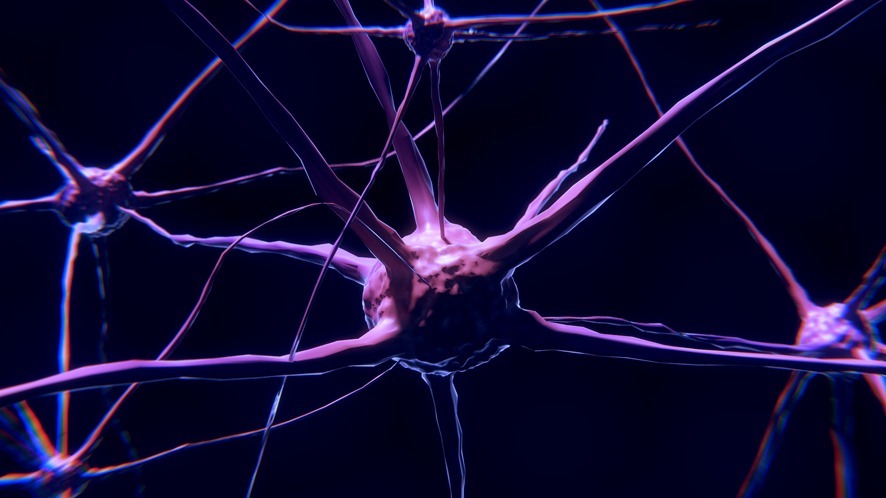Overview
Introduction
Narcissistic individuals often appear outwardly self-centered, ruthless, and emotionally cold. In relationships, their partners frequently struggle with a lack of understanding, empathy, and devaluation. For the narcissistic person, thoughts, emotions, and actions are primarily self-focused, with their own needs, desires, and a constant craving for validation taking center stage.
But why is it like that?
What is the origin of this behavior?
In this article, we will explore these questions, offering insights for reflection and understanding. Please keep in mind, that this article is not meant to insult, judge or condemn people. Even if we have to be aware of the presence of narcissism, we should also acknowledge, that narcissism resides in everyone of us (more or less). Try to see, observe & act clear, when you encounter people with such a behavior. Develop consciousness and stay in tune with yourself. Try not to judge, because ultimately you´ll judge a part of yourself as well!
We’ll begin by examining the general development during the early stages of life, delving into the concept of the “narcissistic wound.” By exploring the internal experiences and relational dynamics of narcissistic individuals, you’ll gain a deeper understanding of the signs they exhibit in relationships.
This reflection aims to foster empathy, clarity, and the power to let go for those who have been in relationships with narcissistic individuals, recognizing that some aspects of people cannot be changed by anyone but themselves. Simply put: This is not your responsibility.
Understanding wounds | the early months of life
Before diving into the narcissistic wound specifically, it’s crucial to first understand the general development that applies to narcissistic tendencies but also the empathetic wound.
1. physical symbiosis
During pregnancy, the fetus experiences physical symbiosis with the mother, sharing her blood, nutrients, and even emotional states. Studies show that stress during pregnancy, for example, can have measurable effects on the fetus. This is because when the mother secretes stress hormones, the fetus also receives them, giving the unborn child an early experience of external emotional stimuli. Thus, even before birth, the child experiences sensations linked to the mother’s emotional state.
2. emotional-energetic symbiosis
After birth, this symbiosis continues emotionally and energetically. When the mother is anxious or upset, the baby often mirrors these emotions, crying or becoming agitated. The child’s survival depends on this emotional bond.
In states of “emergency” the baby can draw attention: “Something is wrong! I am not well. Take care of me!” or “I’m fine like this! I am satisfied!”
Also the infant reflects back the mother’s emotional state. For parents, this creates a challenging feedback loop: the infant not only experiences its own emotional needs but also reflects the parent’s emotional state. A permanent mirror.
3. spectrum of experienced feelings | BINARY
In the earliest stages, a child primarily experiences two emotional extremes: comfort (pleasure) and discomfort (pain). These binary sensations are crucial for survival, as they drive the infant to cry out, if attention and care is needed. The experience of existential levels of fear and anxiety thus helps the infant to survive. This binary emotional spectrum shapes the child’s emotional development.
4. development | ego-awareness, autonomy & self-confidence
By around 18 months, the child becomes aware of being an “I“. It establishes object permanence, understanding that people and objects exist even when they’re out of sight. During this time, the child begins to explore the environment and develop autonomy. Emotional regulation also starts to emerge, as parents help their child understand, verbalize & regulate their emotions. This is laying the groundwork for self-confidence and a sense of self-efficacy.
Emergence of the narcissistic wound
During early development, children require unconditional love, care & guidance from their caregivers. When these emotional needs are either overindulged or neglected, narcissistic tendencies can take root. Adult narcissistic behavior often stems from one of two childhood experiences:
- overindulgence and excessive praise or
- neglect, rejection or ignorance
1. overindulgence and excessive praise
Research from the University of Amsterdam shows that narcissistic traits in children often develop when they are overvalued by their parents.
When a child consistently receives praise and validation for their “unique qualities”, they begin to internalize the idea that their worth is tied to constant external validation. This creates a dependency on immediate gratification of their desires. If their needs are not met promptly, the child may react with frustration, anger, or sadness.
Parents of narcissistic children often share similar traits. They may see their child as a reflection of their own specialness, treating the child with excessive pride. However, there can be other reasons behind this behavior, such as high parental expectations or unresolved psychological issues.
Parents who quickly soothe their child’s unpleasant emotional states may struggle with managing their own emotions. They find it uncomfortable to witness their child in distress, so they either meet the child’s needs instantly (“Don’t cry, here’s the candy bar”) or dismiss these emotions altogether (“It’s not that bad, look at this instead”).
In both scenarios, the child’s feelings are invalidated. The child learns that difficult emotions like anger, fear, or sadness must either be suppressed or immediately resolved. This teaches them to avoid rather than process these emotions. This doesn´t allow them to access or understand the deeper meaning behind their feelings.
Constant gratification fosters a sense of entitlement, where the child starts to expect special treatment as their baseline reality. When their needs aren’t met, they feel threatened. Empathy and perspective-taking don’t develop because they remain at the center of their own perceived world. This turns into a blueprint for relationships, leading them to expect that any deviation from their desires in the future is a lack of unconditional love.
At first glance, it might seem that showering a child with attention and indulgence is positive. However, this approach prevents the child from being loved in their entirety. The parents don’t address the child’s deeper emotional needs, fears, or desire for autonomy. Instead, they respond only to surface-level desires, ignoring the underlying emotions. By immediately erasing fear, frustration, or sadness, they deny and reject those parts of the child. Something the child introjects and carries on.
This dynamic sets the stage for early emotional splitting. The child becomes dependent on external sources for emotional regulation, unable to manage their inner life on their own. The affection they receive is superficial, a substitute for genuine love. This leaves the narcissistic child unsatisfied, with a lingering need for true, unconditional love. Deep inside, the child feels abandoned, and although this wound becomes almost inaccessible to the narcissistic adult, it remains a source of constant, underlying panic and grief – the deep, unresolved hurt of an abandoned child.
When children are consistently told or shown that they are more intelligent or special than others, they internalize these evaluations. Over time, these children come to expect constant praise and immediate gratification, resulting in frustration, anger, or sadness when their needs are unmet. In addition to basic reinforcement effects, the child also experience social learning (Bandura) – the behavioral patterns of parents turn into a blueprint for social interactions. Simplified: “That´s how it should be!”
2. neglect, rejection or ignorance.
When parents lack sensitivity, grapple with psychological issues, or exhibit pronounced self-centeredness, they often misinterpret their child’s signals. This inability to connect leaves the child feeling isolated and vulnerable. For instance, allowing a child to cry for extended periods can lead to profound feelings of fear and panic, creating a sense of existential threat. Additionally, exposure to physical or emotional violence, or even indifference, can leave lasting scars.
To a child, these parents may appear unavailable and threatening, especially if the child experiences violence in their environment. The parents do not respond with empathy; instead, they exert control and judgment based solely on their perspectives. As a result, the child feels unseen and alone. In their early months, when dependency is critical, children will do anything to earn their parents’ affection—seeking love and warmth to avoid potential threats and dangers.
When parents trigger anxiety or dismiss feelings of sadness, fear, or anger, they expose the child to overwhelming panic. While adults typically develop coping strategies for these emotions, children lack such tools. Consequently, the child remains engulfed in a nameless, existential panic until their inner alarm system eventually shuts down due to emotional overload. This protective mechanism splits off feelings of helplessness, fear, and unmanageable grief from their conscious experience.
In this process, the child effectively blanks out parts of their being, severing ties with aspects of their personality. This disconnection fosters a damaging belief that they are worthless, intricately linked to the pain of rejection and existential threat. The aspects of their personality tied to low self-worth remain locked away with those overwhelming feelings, creating a box that the child cannot access anymore.
As a result, the child does not learn to navigate these emotions effectively; they cannot engage with them. Their formative relationship experience becomes one of worthlessness, encapsulated in the belief that they cannot be their true selves. To escape feelings of panic and worthlessness, the child often adopts roles that please their parents, conforming to their expectations in hopes of gaining validation. This facade temporarily bolsters their fragile self-worth and conceals the emotions locked away in the box.
Love and attention from parents is conditioned – to the child’s ability to meet certain standards rather than acknowledging their intrinsic worth as individuals. Without a loving role model to guide them, the child’s own feelings remain fragmented and unintegrated. Over time, the internalized rules of their parents morph into self-imposed guidelines that govern their interactions with others. As these children transition into adulthood, they often struggle with empathy and remain self-centered.
Throughout their lives, they work tirelessly to maintain the image they have crafted, fearing exposure to their own feelings of worthlessness. Additionally, they project these rules onto their relationships, preserving the carefully constructed world of the narcissistic individual. This protective system must not falter; otherwise, they risk confronting the split-off emotions of panic, anger, and sadness that reside in the locked box – where turmoil simmers just beneath the surface.
Effects of the narcissistic wound | Imprints
The narcissistic wound manifests in several ways, each affecting interpersonal relationships and emotional well-being:
1. intolerance of negative feelings
The child, and later the adult, often displays a profound intolerance for negative feelings. When faced with emotions such as grief, rejection (which strikes at their self-worth), fear, or frustration, the narcissistic individual typically reacts with panic, quickly followed by anger. This anger serves as a defense mechanism to protect their tightly closed emotional box. Unfortunately, the primary emotions remain unacknowledged and inadequately processed; they evoke fear rather than understanding in the narcissistic person.
Throughout their lives, these feelings have been split off and suppressed, leaving the individual unsure of how to confront or manage them. As a result, they live in a state of constant fear – specifically, fear of their own emotions. Their central mission becomes the relentless pursuit of proving their own worth and awesomeness, a desperate attempt to drown out the nagging whispers from within the box: “You are worthless,” “You are not important,” “You are not good enough,” and “You are wrong.”
This internal (mostly unconscious) dialogue creates an ongoing, tumultuous war within themselves.
The narcissistic person grapples with their own significance, constantly battling against the echoes of their past and the internalized, split-off beliefs that continue to haunt them. This struggle not only distorts their emotional landscape but also prevents them from forming genuine connections with others, as they remain trapped in their own cycle of fear and self-defense.
2. manipulation & instrumentalization
The child, and later the adult, learns to manipulate others in order to maintain their sense of self-worth and avoid confronting feelings of fear, sadness, and worthlessness. This manipulation, whether conscious or unconscious, becomes a key strategy in preserving their internal framework – a system they have known and relied on since their earliest relationship experiences. Within this system, they do not experience remorse, as they have no understanding of it. To them, this is simply how the world operates.
Their first experiences with relationships ingrained this belief, making it a core part of their perceived reality. In their view, the world functions according to their self-centered perspective. Any deviation from this belief threatens their sense of control, triggering panic, which is quickly followed by anger. To restore balance, they must reshape reality (= Gaslighting) to fit their subjective viewpoint.
The narcissistic person employs various defense mechanisms to achieve this, often distorting the truth or manipulating others (as explored in detail in Empath & Narcissist: 11 Key Insights into Dynamics and Your Path to Healing).
Despite sometimes using lies, they do not typically come across as dishonest. This is because they genuinely believe in the universality of their reality. This unwavering conviction becomes evident in their interactions with others, as they manipulate situations to align with their deeply held, distorted view of the world.
3. inability to empathize
Narcissistic individuals have a limited capacity for empathy. While they may understand that others are experiencing emotions like sadness or disappointment, they struggle to connect emotionally. Their self-referential worldview makes it difficult to engage in genuine emotional exchanges, and any criticism or perceived attack on their self-image is met with defensiveness or anger.
Example:
Viktor loves the Middle Ages and has been deeply immersed in visiting castles and palaces along the Rhine for the past three days with his girlfriend, Stefanie. While this is a passion that Viktor holds close to his heart, Stefanie does not share the same interest in medieval history. Nevertheless, she participates wholeheartedly, enjoying the time they spend together and the opportunity to explore new places. On the fourth day, they set out on a boat trip, an activity that Stefanie had been looking forward to and one that they had mutually agreed upon.
However, as soon as the boat departs, Viktor grows visibly bored. He doesn’t speak much, and when Stefanie tries to share her excitement, he responds coldly and dismissively. His face shows irritation, and he remains distant, robbing Stefanie of the joy she hoped to share. Sensing the growing emotional distance between them, Stefanie bravely asks Viktor what is wrong. Instead of reflecting on her question or their shared experience, Viktor bluntly replies that he is bored, shutting down any further emotional exchange.
Stefanie feels hurt. She had made an effort to enjoy the castle tours with Viktor even though they weren’t her preference, and now that it’s her turn to enjoy something, Viktor refuses to reciprocate. When she expresses her disappointment and sadness, Viktor immediately becomes defensive. “Why do you spoil your own mood?” he snaps. “Just enjoy it! It was your wish! We’re here, aren’t we?” With this statement, Viktor shifts the responsibility for Stefanie’s emotions entirely onto her, rejecting any accountability for his cold behavior.
Stefanie, trying to save the day and mend the growing rift, attempts once more: “Can’t you just be a little happy with me? After all, I was also happy about the time with you during the castle tours, even if it’s not my thing.” Instead of seeing this as a fair compromise, Viktor’s ego becomes even more threatened. He lashes out, interpreting Stefanie’s words as a hidden attack. “Oh, so that means you didn’t want to visit the castles at all? Were you just pretending? Don’t ever do that again!”
With this accusation, Viktor entirely reframes the situation. Instead of acknowledging her needs, he projects his feelings of insecurity onto Stefanie, accusing her of being dishonest and manipulating him during the previous days, when, in fact, she was making a genuine effort to connect with him.
4. Control and Self-Reference
Viktor’s reaction illustrates a common narcissistic dynamic: control through emotional withdrawal and manipulation. By acting bored and indifferent during Stefanie’s chosen activity, he asserts his dominance in the relationship. His emotions and preferences take precedence, while Stefanie’s are sidelined. When Stefanie tries to engage him, he places the blame for his mood squarely on her desires. After all, from Viktor’s perspective, she made him participate in something he didn’t want to do. This dynamic of self-reference – the idea that everything revolves around his own experience – isolates him from Stefanie’s emotions.
When Stefanie confronts him with her sadness, Viktor detaches himself emotionally. For him, Stefanie’s feelings are her own responsibility, and he sees no connection between his behavior and her distress. Thus erasing the rule of reciprocity.
Viktor’s lack of emotional empathy – his inability to step into Stefanie’s emotional world – fuels this disconnect. While he can recognize that Stefanie is upset (cognitive empathy), he lacks the ability to emotionally resonate with her pain (emotional empathy). In Viktor’s worldview, Stefanie’s sadness is not his problem, and any attempt on her part to express her need for connection is viewed as an attack on his sense of self.
5. Projecting own feelings
When Stefanie tries to explain her feelings, Viktor quickly escalates the situation. Rather than addressing her concern about their shared experience, Viktor deflects by projecting his own emotions onto her. He accuses Stefanie of not enjoying the previous days, twisting the narrative to make her the “deceiver.” This is a classic example of projection – a defense mechanism where Viktor transfers his own dissatisfaction onto Stefanie. In reality, Viktor is the one who is bored and disengaged, but by accusing Stefanie of dishonesty, he can avoid confronting his own feelings.
Viktor’s projection serves multiple purposes: it shifts blame away from himself, reassures him of his importance (since his behavior has an emotional impact on Stefanie), and sabotages Stefanie’s enjoyment of the boat trip. Through this manipulation, Viktor ensures that he regains control of the situation. Now, Stefanie is not only upset about Viktor’s behavior, but also left questioning her own actions. The boat trip, which was supposed to be her moment of joy, becomes an emotionally charged experience filled with tension and doubt – effectively ruined for both of them.
6. resistance to reflection and responsibility
When asked to reflect on their behavior, narcissistic individuals often perceive this as a direct attack. Their defense mechanisms, built for self-protection, trigger immediate resistance. Viktor’s reaction exemplifies this: as soon as Stefanie asks him to consider her perspective, he retreats behind a wall of defensiveness, unwilling or unable to engage in introspection. This reaction stems from a deep-seated fear of vulnerability and the threat of confronting their own inadequacies.
5. Emotional reasoning, splitting, & the EMOTIONAL blindness
The narcissistic individual lives in a world of extreme polarization, perceiving everything in terms of good and evil – a worldview shaped by psychological splitting. Their reactions are not based on objective reality, but on their own subjective emotional experiences.
In psychology, this is known as emotional reasoning. If the narcissistic person feels attacked, they interpret that as proof that an actual attack has occurred, regardless of the objective facts or any rational explanation to the contrary.
They will insist that their perception is the truth and assign blame to the other person, believing that their personal reality is the universal reality. For them, any differing perspective is simply wrong.
This inability to recognize or validate other viewpoints stems from a lack of empathy. To see the world from someone else’s perspective would require stepping outside their own fortress of self-perception – something they are unable or unwilling to do, as it feels too threatening. The narcissistic person struggles with what professionals call mentalization, the capacity to understand the thoughts, feelings, and intentions of others. This is also linked to a condition known as alexithymia, which refers to the inability to identify and describe one’s own emotions and the emotions of others.
The phenomenon of gaslighting, often seen in toxic relationships, is explored extensively in my (german) book. It delves into the psychological manipulation tactics used by narcissistic individuals and outlines clear strategies for breaking free from these damaging dynamics.
6. Continous tension | scanning for threat, the enemy
The ongoing inner war in a world of good and evil takes a heavy toll. The narcissistic person must constantly deflect, project, manipulate, control, bend reality to suit himself, and distract with pleasurable experiences. This constant mental and emotional effort drains enormous energy.
There is no lasting peace within a narcissistic person; he remains under permanent inner tension, even if he outwardly seems calm, indifferent, or even cool. Internally, he is working non-stop, battling the voices from the locked box that tell him he is worthless, useless, a failure, incompetent, repulsive.
He is unconsciously consumed with fighting these inner judgments, making him restless, irritable, and often bad-tempered. His constant fear of being judged (while judging all the time) has him perpetually scanning his environment for threats. Every word or gesture is scrutinized for potential danger. At the slightest hint of criticism or suspicion, he strikes defensively.
Another example:
Stefanie started smoking again, stressed by Viktor’s growing tension. Viktor is deeply disturbed – not out of concern for Stefanie’s health, but because he doesn’t like the smell and sees her behavior as a weakness. During a stop, he asks her why she has started smoking again. Stefanie replies, “Because I’m so tense. I don’t recognize you lately.” Without a word, Viktor turns away, walks back to the car, and doesn’t speak to Stefanie for the rest of the day. Confused and growing angry, Stefanie confronts him that evening after hours of silence. Viktor replies, “You’re smoking to punish me for my behavior – how do you expect me to respond?”
Viktor completely misses Stefanie’s perspective. He interprets her actions as a personal attack, assuming that she is trying to reprimand him for behavior she dislikes (what he´s doing). In the narcissistic person’s world, everything revolves around them. They are solely preoccupied with protecting their own significance and fending off perceived attacks. This constant, energetically charged state of existence exhausts not only the narcissistic individual but also those around them.
Conclusion | How narcissism works in relationships
The narcissistic person sees love through a lens shaped by his own needs and desire for validation. If he experienced overwhelming admiration as a child, this becomes his blueprint for future relationships.
On the other hand, if he felt devalued, he seeks the opposite: someone who recognizes and reinforces the self-protective reality he’s built.
In relationships, he is drawn to someone who helps him ward off his inner demons, merging with him in a kind of symbiosis without coming too close to his deeply buried emotional pain. Impossible as we see.
He seeks a partner who doesn’t challenge him, who is endlessly understanding, predictable, and willing to set aside their own needs to maintain harmony.
Yet beneath all of this, the narcissist harbors a deep, unfulfilled yearning for unconditional love. This wound stems from never having been accepted or loved for who he truly is. The paradox is that while he craves this love, his defensive system prevents it.
His fears, insecurities, and doubts are locked away in a that box, hidden from both himself and others. He cannot face these feelings, and so he remains trapped in a projection of his fears.
At the heart of this locked box is the child who was never loved, the source of his panic and need for protection. While he longs for unconditional love, he fears it most of all. If someone approaches too closely and begins to understand him, he recoils, protecting himself from what he perceives as a threat to his carefully constructed reality. He cannot acknowledge the emotional wounds he carries, and this blocks true connection.
Because of this, the wounded narcissist can only engage in relationships from a place of fragmentation and division. True understanding or empathy is beyond reach for him, as he is imprisoned by his own fears. At the core of his being is a hurt child, crying out to be heard, yet he denies it for fear that everything he’s built will collapse.
This article seeks to foster understanding and compassion for the wound of a narcissistic person, but also to remind readers that they cannot help and have to be careful with him. The only person who can change a narcissist is himself, and even then, it would require an acceptance of reality that he may not be willing or able to face. While nothing is truly impossible, the depth of these defense mechanisms makes meaningful change unlikely without his own readiness to heal.
Remember, too, that you can never fully understand someone else’s story. Focus on maintaining your own boundaries and respect the boundaries of others. This is also a key aspect of my work in supporting others.
What can you do? Setting boundaries and letting go
There is very little you can do to change someone else’s unhealthy patterns. The one thing you can do, however, is acknowledge that they live in a different reality and set clear boundaries to distinct yours from theirs.
You can offer insight or extend invitations to reflect, but if there´s no understanding or willingness to see that relationships includes reality of two people, you may need to detach.
A firm “no” to harmful behavior is crucial, not just for your well-being but also as an implicit “yes” to the person beyond their destructive patterns. Even though they might not recognize or accept it, your “no” is also a rejection of their flight from themselves and the way they treat their inner wounds.
If this person eventually chooses the path of reflection and healing, respect their journey and decide for yourself to what degree you want to accompany them. But remember: their issues are not yours, and you should avoid becoming a therapist, nor prolonge any suffering.
You are responsible for your own well-being first. This means recognizing your vulnerability, honoring it, and taking appropriate action to value yourself. By saying “yes” to yourself, you show care for your own inner child, just as you acknowledge theirs – though you cannot heal it for them. Their healing starts with their decision.
Let them be, with compassion and understanding, but also with a strong commitment to yourself.
This is your life to live, in alignment with your self-love and truth.
Clear boundaries are essential, both internally and externally, for love to flourish.
Try to see & accept things as they are – right now – in yourself and in others. Only then can peace emerge.
There´s no sense in wasting your life imagining another person to change in the way you would wish they would.
See things as they are and focus on what you can direct and control.
There´s so much more to discover about that beautiful & loving person that brushes your teeth – every single day!
With love, Kristina







